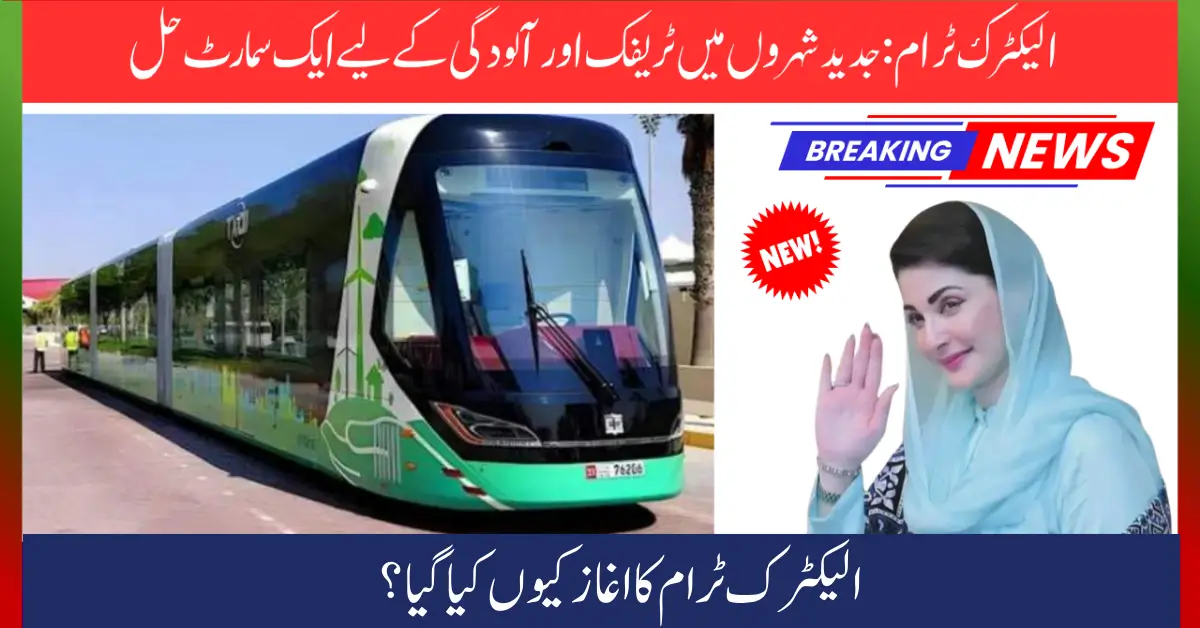Eco-friendly Urban Mobility
Eco-friendly Urban Mobility: Cities around the world are struggling with two major issues: rising traffic congestion and the urgent need to cut carbon emissions. With climate change threatening our future, modern cities must adopt cleaner and smarter transport systems. One of the most effective solutions is the electric tram system, a mode of travel that combines sustainability, efficiency, and accessibility.
Pakistan has already taken a step in this direction. The first electric tram system was introduced in Lahore, and now plans are underway to bring the same system to Islamabad. This innovation is more than just a transport upgrade — it is a long-term investment in cleaner air, reduced congestion, and better quality of urban life.
Infinix Xpad 20 Pro Launched: Affordable 12-inch Tablet with Powerful Features
What is an Electric Tram System?
An electric tram system is a rail-based transport powered by electricity instead of fossil fuels. Unlike regular buses, trams run on fixed tracks laid along roads or separate corridors. Electricity is usually supplied through overhead wires or underground systems, ensuring smooth, efficient, and eco-friendly operation.
Modern trams in Pakistan are designed with double-unit carriages that can carry up to 250 passengers at a time. With rapid charging technology, a tram can charge for just 10 minutes and then cover a distance of nearly 25 kilometers, making it practical and reliable for daily city commuting.

Gold Prices Pakistan Hit Record High — Tola Reaches Rs 367,400 After Sharp Increase
Why Modern Cities Need Electric Trams
The importance of an electric tram system lies in its ability to reduce both emissions and congestion. Unlike diesel buses, trams do not release harmful gases into the air. This improves air quality and reduces the risks of respiratory diseases and other health problems caused by pollution.
Another advantage is efficiency. A single tram can carry hundreds of passengers in one trip, which means fewer private cars on the road. This directly reduces traffic jams, especially during peak hours, and makes public transport more attractive for daily commuters.
Environmental and Operational Benefits
Electric trams stand out for their environmental benefits. They:
- Cut greenhouse gas emissions by replacing fossil-fuel vehicles.
- Run quietly, lowering noise pollution in busy urban areas.
- Offer predictable schedules because they operate on fixed routes and are less affected by road congestion.
When powered by renewable energy like solar, trams become an even more sustainable part of urban infrastructure.
Latest Update on Petroleum Prices in Pakistan – Increase or Decrease?
Passenger Experience on Electric Trams
Electric trams are not only eco-friendly but also comfortable and inclusive.
- They provide level boarding platforms, making it easy for people in wheelchairs, senior citizens, or parents with strollers to travel.
- The ride is smoother than a bus, with less vibration and noise.
- Frequent services, including night operations, ensure reliable transport for all city residents.
These features make the electric tram system a people-centered solution that meets the needs of diverse communities.
Costs, Lifespan, and Value for Cities
Building tram infrastructure requires significant upfront investment for tracks, power systems, and vehicles. However, trams have a longer operating life than buses and cars. Cities usually recover these costs through increased ridership, fare collection, and economic development along tram routes.
Studies worldwide show that areas near tram lines often see growth in housing, schools, and businesses, making them lively and attractive urban neighborhoods.
Sustainable City Development and Electric Trams
The electric tram system is closely linked with smart urban planning. By building communities around tram stations, cities encourage:
- Walkable neighborhoods where residents depend less on private cars.
- Mixed-use development with schools, shops, and offices near transport hubs.
- Economic growth through better accessibility and increased business activity.
For Islamabad, introducing electric trams could set the foundation for a modern, sustainable capital city.
Total Lunar Eclipse in Pakistan on September 7, 2025: Timings, Visibility, & Viewing Guide
Global Success Stories and Local Progress
Around the world, electric trams successfully connect business districts, universities, and residential areas, reducing congestion and providing reliable service.
Pakistan’s journey began with Lahore’s tram pilot project, which proved that clean transport is possible in our cities. Now, Islamabad has the opportunity to build on this progress, applying lessons from international models and local experiences.

